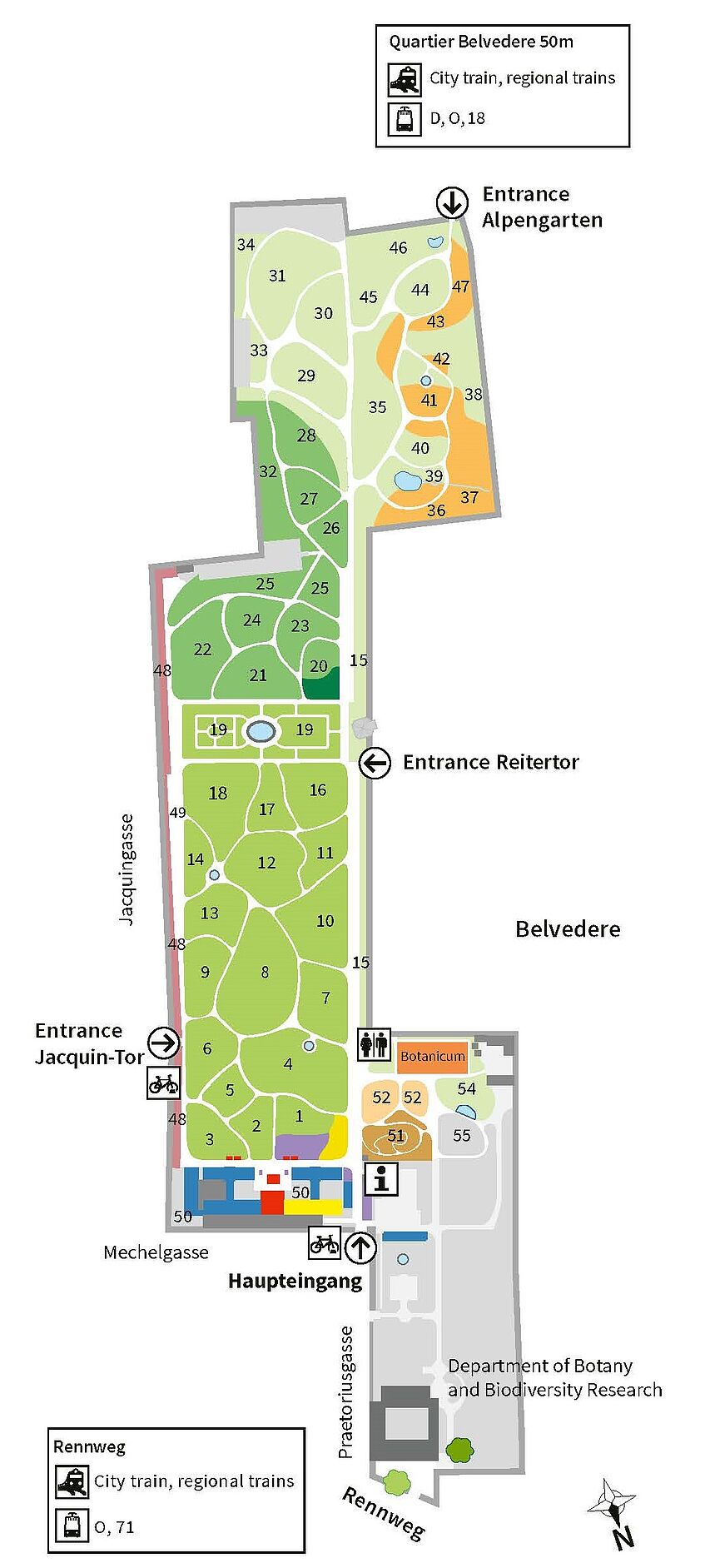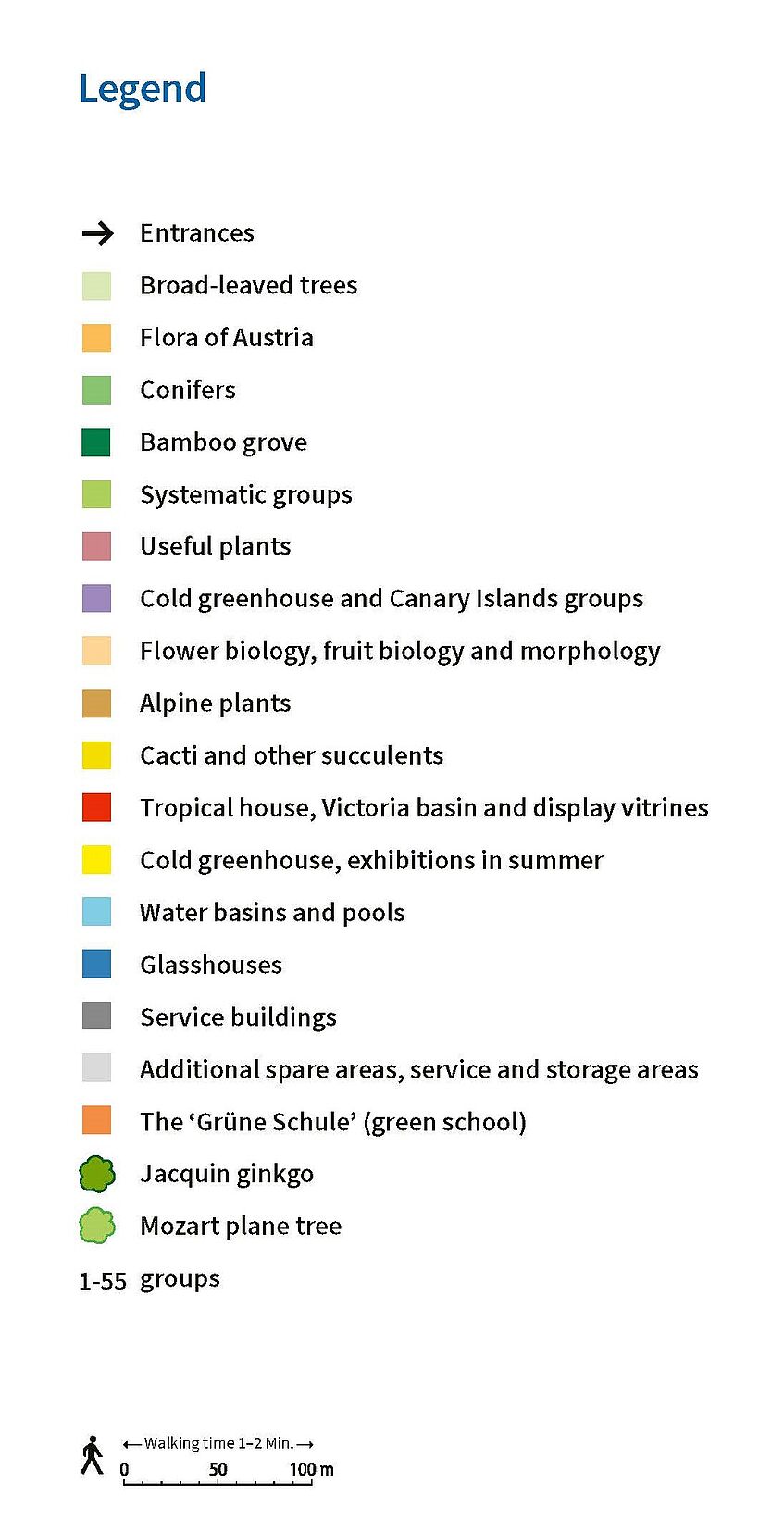Map
Display Groups and buildings
- Entrances
- Cactii and other succulents (Group 1): except for some hardy species of Opuntia only displayed in summer. Divided in an Old World and a New World part and two special groups: Southern Africa and Madagascar. Between the succulent plants annual species native to the corresponding dry areas of the Old and New World
- Cold greenhouse and Canary Islands groups (1): c. 150 subtropical and mediterranean species not hardy in our climate; only displayed in summer
- Alpine plants (51): c. 800 species, mostly originating from the European alpine areas (Alps, dinarian-illyrian mountains, Pyrenees)
- Flower biology, fruit biology, and morphology (52)
- Systematic groups (1-18): arrangement of the plants according to their relationships; displayed in English landscape garden style for the dicotyledonous plants; group 19 shows the monocotyledonous plants; species and families are, to the extend possible, arranged according to their natural relationship: species of the same genus directly next to each other, related genera in the same or in neighbouring plant beds
- Broad-leaved trees (1, 29-49): in total more than 1.500 individuals of c. 600 species and cultivars, amongst those c. 900 trees, incl. marvellous old individuals like the Jacquin-Plane Tree (living historical monument) at the Rennweg
- Bamboo grove (20): proven to be continuously present at this place since at least 1893, today covering an area of c. 300 m2
- Conifers (20-28): c. 100 species of gymnosperms from Europe, Asia and Northern America; most trees of the Conifers in groups 20 to 28, were planted towards the end of the 19. century
- The "Flora of Austria" (36-47) with the main focus Pannonian Group (38-42): presentation and conservation of species of dry habitats in Eastern Austria like forest- and stone steppe or dry grasslands on acid or basic soils, salty substrates or sand dunes - i.e., of plant communities today only fragmentary having survived in Austria
- Useful plants (48): c. 300 species, mostly used for the training of students and for information of visitors
- Water basins and pools: partly dating back to the time of the foundation of the garden (see history). With interesting species like the Lotos flower
- Tropical house, Victoria basin, and display vitrines (50)
- Cold greenhouse (50)
- Glasshouses (50)
- The Botanicum (54)
- Department of Botany and Biodiversity Research
- Mozart-Plane Tree and Jacquin-Ginkgo (Rennweg 14)
Plant labels
The plant labels carry indispensable information about the plants on display in the Botanic Garden. Each label shows the minimum necessary data, and sometimes additional information.


